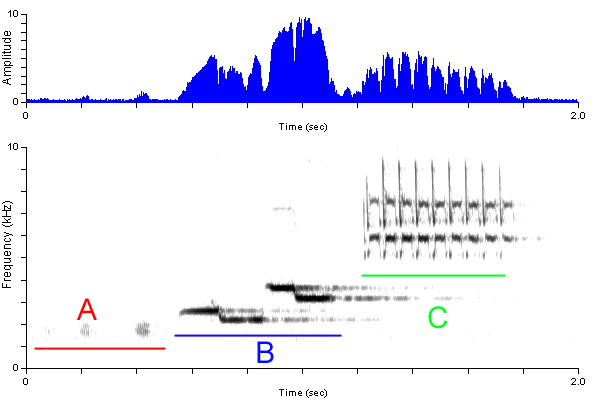Dana Beach called me Sunday with an "urgent bird question." Could I come up to the Black River, where he was working on the management plan for a parcel of protected riverfront land, and make sure he wasn't missing anything in the riot of birdsong he was hearing. I went up this morning and did my best to help. At any rate, I got some of the best recordings of my life. Follow the Ebird link above to hear and see the others, including Yellow-billed Cuckoo, Belted Kingfisher, Red-headed Woodpecker, Red-eyed Vireo, and Northern Parula.
Surpassing all the other singers was a Wood Thrush. It is hard to match his singing for sheer ethereal beauty, and underlying it, maybe even creating that beauty, is the technical virtuosity of the average male Wood Thrush. I will wait right here for you to listen to the playback. When you are ready, if you so choose, you can come back here and we'll make a respectful inquiry into that virtuosity, from a safe distance.
This long serenade is divided into discrete units we'll call "songs." Each is around two seconds long, and each is different from the one before it. The way the thrush produces this variety involves an "ingenious" use of combinations. The song below is typical. It begins with a few low, soft notes we'll call a chuckle. You can see a nice 5-note chuckle just before 0:10 on the sonogram. You could make this sound by clucking your tongue. We'll call the next part a whistle, although I hasten to add that it's almost always several whistles, each at a different pitch, and usually, like the notes in human music, they are pure tones with no rise or fall in pitch. You can whistle these little tunes if you're a virtuoso whistler. Most of us could do a slowed down version. Finally, there's the trill, which is very complex. Please do not try to do this at home. The three phrases, A, B, and C, all come in several varieties. When you take all the possible varieties of A, B, and C and combine them every way possible, you have dozens of combinations, which means dozens of song-types are available for each thrush. They use some but not all of the possibilities. In The Singing Life of Birds, pages 237-254, Don Kroodsma describes how an individual thrush combines his song-types to produce a singing performance, a serenade in which every song is different from the one before. After you've read Kroodsma's account, I invite you to come back here and score the song-types of today's thrush. Does he follow the same rules as Kroodsma's birds?

One more thing, the beauty of the thrush's sounds is accentuated by his ability to change frequencies without smears, and by his ability to produce two unrelated
tones at the same time. Kroodsma explains all of that, too. It is amazing.